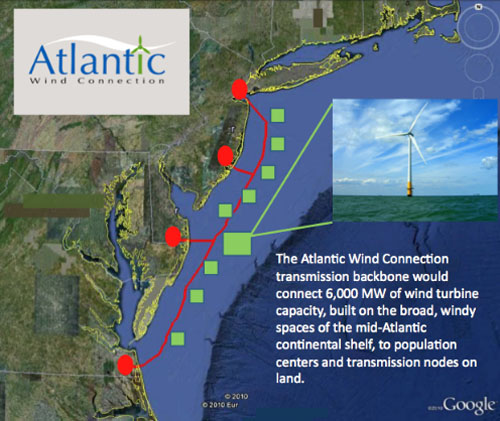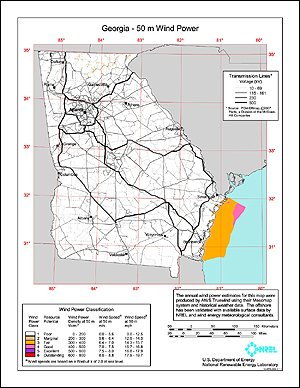Zachary Shahan wrote for CleanTechnica yesterday, Google-backed Offshore Wind Power Superhighway Moves Forward,
The Department of the Interior stated on Monday that there was “no overlapping competitive interest” for the areas where the $5-billion project would be constructed. This decision leads us to the next step in the process — environmental review of the Atlantic Wind Connection line.

The article notes that environmental review could take 18-24 months, with a projected power online date of end of 2017. Southern Company projects Vogtle Unit 3 online in 2016 and Unit 3 in 2017. And that’s before the cost overruns that have already started. I’m guessing Google will have its Atlantic wind project up and running before Southern Company has any new nukes online, if they’re ever online.
And remember, the Atlantic Wind Connection is privately funded:
Other than Google, companies funding the project include Good Energies and Japan’s Marubeni Corp.
The cost is about $5 billion for 6,000 MW of wind energy generation.
Meanwhile, Southern Company has already overrun its nuke cost estimate by almost $1 billion within a few weeks of NRC go-ahead. It won’t take long at that rate for the cost overruns to exceed $5 billion. That’s on top of the perhaps $8.3 billion base cost. That’s for two 1,100 MW reactors, for 2,200 MW total.
What if Southern Company and private investors quit wasting resources  on nukes and funded a Georgia Bight Wind Connection instead? After all, Georgia’s offshore waters are part of the East coast wind energy basket.
on nukes and funded a Georgia Bight Wind Connection instead? After all, Georgia’s offshore waters are part of the East coast wind energy basket.
-jsq





